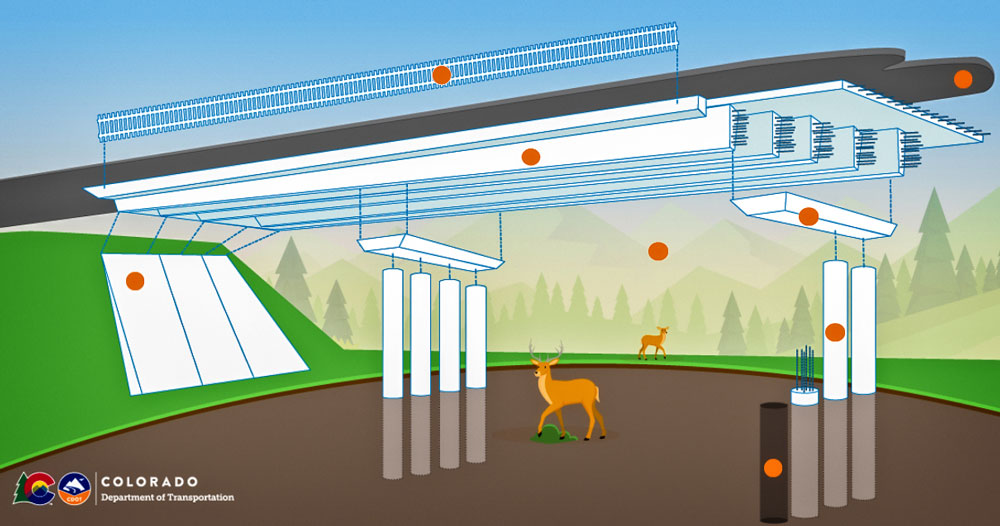I-25 project aims to reduce vehicle-animal collisions by 90%
By Chris Michlewicz; graphic courtesy of the Colorado Department of Transportation

The Colorado Department of Transportation is planning to install new deer fencing between Ridgegate Parkway and Castle Rock Parkway. The state is also building four new wildlife crossings and 28 miles of deer fencing along I-25 south of Castle Rock to help animals safely cross under the highway.
The installation of new wildlife crossings and deer fencing is expected to improve safety in an area known for vehicle collisions with animals trying to cross I-25.
This summer, the Colorado Department of Transportation (CDOT) approved new game ramps, swing gates and several miles of deer fencing on both sides of I-25 between Ridgegate Parkway and Castle Rock Parkway. Deer fencing, which is typically 8 feet high, keeps animals away from the lanes of traffic and guides animals to the crossings; game ramps and swing gates enable wildlife to safely exit fenced transportation corridors.
The wildlife mitigation tools will run adjacent to the highway and frontage roads, like Havana Street on the east side of I-25. They’re expected to benefit both motorists and animals in an area of I-25 where accidents have become more frequent. CDOT and the City of Castle Pines will share more details, including timing of construction, with residents in the coming weeks.
CDOT has already begun installing four new wildlife crossings along a busy, 18-mile stretch of the interstate known as the South Gap, between Plum Creek Parkway in Castle Rock and State Highway 105 in Monument. The transportation agency has constructed 26 miles of fencing so far as part of an overall “wildlife mitigation system,” said Bob Wilson, CDOT spokesperson. The entire project is expected to be complete with the rest of the South Gap construction in November 2022.
The crossings are full-span bridges built in strategic places along the corridor to allow animals to cross safely under the highway. CDOT designed the crossings and fences for all types of wildlife found in the area, including deer, elk and bears.
In preparation for the work, Colorado Parks and Wildlife (CPW) officials placed 12 trail cameras along I-25 between mile marker 172 and mile marker 162 to determine the diversity of wildlife present and to capture travel patterns.
CDOT and CPW analyzed locations along the corridor where wildlife collisions were highest, areas of expected wildlife movements, existing game trails, culverts, drainages and existing bridges. Data collection is expected to continue through the end of the year, according to a webpage dedicated to work on the I-25 South Gap. The state’s goal is to reduce animal-vehicle collisions by 90%, Wilson said.
“Three of our crossings (bridges) are already complete, and our crews have already seen bears, elk, deer and bunnies using them,” Wilson said.
Prior to the I-25 South Gap project, there was an existing 150-foot-long bridge that functioned as a wildlife crossing over East Plum Creek, just south of the Spruce Mountain Road interchange. Recent construction as part of the South Gap project improved on that crossing by expanding the size of the bridge to 300 feet.
The area represents the largest contiguous open space on the Front Range, resulting in an abundance of wildlife and higher-than-average animal-vehicle collisions, Wilson said. The I-25 South Gap “experiences a collision per day in the spring and fall peak wildlife movement seasons,” he said.
To see detailed maps of the planned fencing and game ramps, go to www.castlepinesco.gov/i-25-wildlife-fencing-update/.